Garden Tradescantia: types, varieties, planting and care
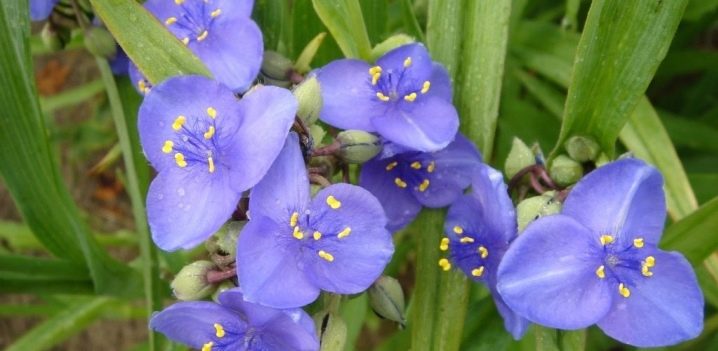
Garden Tradescantia is a popular plant that has many varieties. For many flower growers, this is a common houseplant that does not stand out against the background of others. In fact, it is a favorite flower of gardeners who appreciate its resistance to adverse conditions and the fact that it is ideal for growing near bodies of water.
Tradescantia acquires special value for those who are fond of landscape design, after all, with the help of it, you can create multi-colored volumetric thickets and figures on the land... In this capacity, they are not inferior to anemones and geraniums, which are traditionally planted by gardeners as ornamental plants.
Peculiarities
Tradescantia belongs to the genus of perennial grasses, belongs to the Kommelinovye family. This beautiful creeping flower got its name thanks to John Tradescant, the gardener of King Charles I of England. Back in the 17th century, this plant won the sympathy of royalty, so Tradescant diligently began to breed this plant with bright flowers and lush vegetation. Tradescantia is a vines from the tropics of America. It has taken root well in Europe as well, here it is grown indoors or in gardens. This became possible thanks to selection.
The resulting hybrids are able to grow at not very high temperatures. Street tradescantia bloom in May and delight the eye before the onset of a cold snap. The leaves of the plant are in the shape of an oval, and the height of the garden bushes usually does not exceed the half-meter mark. They are covered with flowers of white, pink lilac, red and blue. Their structure is the same as that of domestic counterparts: 3 petals, against which bright stamens stand out.
Although the flower's lifespan is short - 1 day - they appear over and over again, so the bush always looks beautiful.
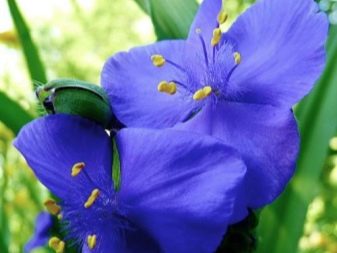

Beneficial features
Tradescantia carries not only decorative functions, it also has medicinal properties.
- For cuts. Tradescantia is capable of killing germs and stopping blood. Before applying the sheet to the wound, it must be washed and crumpled with your hands.
- For colds... A decoction of this plant is used for rinsing.
- With diseases of the gastrointestinal tract. Relieves inflammation in the stomach and has a calming effect on all organs of the digestive system.
- Against periodontal disease. To strengthen your gums, chew the leaf before and after meals.
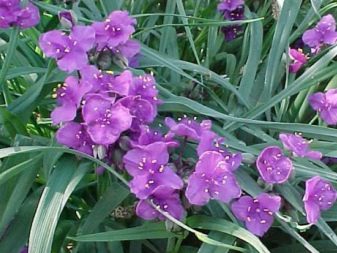
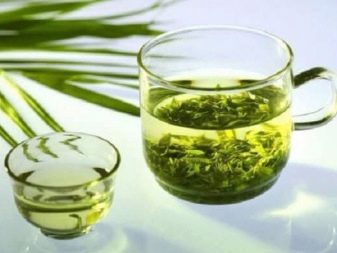
Views
There are quite a few types of tradescantia. They may differ in appearance and have characteristic features. Different species prefer different climates, and not all are suitable for outdoor cultivation. We bring to your attention a list of the most popular plant varieties.
- Virginskaya. It is named after the state of Virginia, where it actively grows. She takes root well in our latitudes. This perennial grows on average to a height of half a meter (plus or minus 30 cm). The species feels comfortable on wet ground and is generally unpretentious: in summer it survives drought well, and frost in winter.
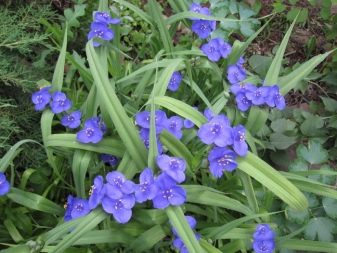
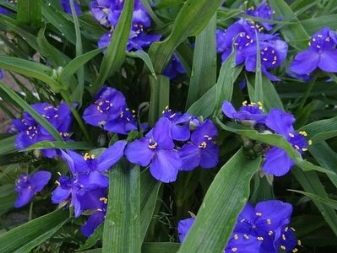
- Tradescantia Anderson. It resembles the previous species, it also grows well in temperate climates, but differs in purple-green or light yellow leaves.
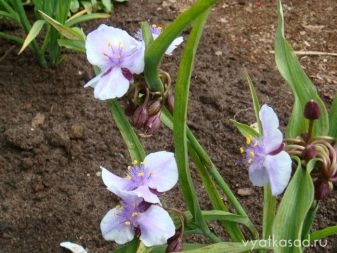
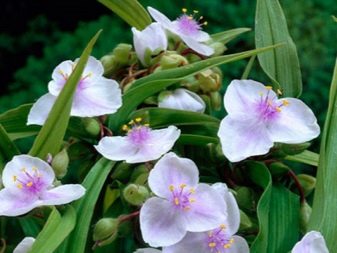
- Giant. Despite this name, the height of its stems does not exceed 40 cm. It grows on the rocky lands of Texas.Its leaves are wider than those of other relatives, and the sepals have a velvety edge.
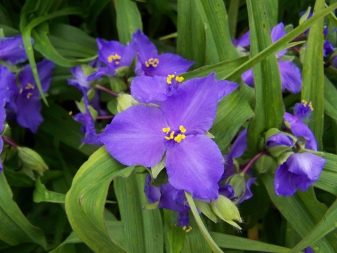

- Long-rhizome... In its natural habitat, it grows in the Missouri hills. It is characterized by shoots only 10 cm high. It tolerates unfavorable weather conditions.
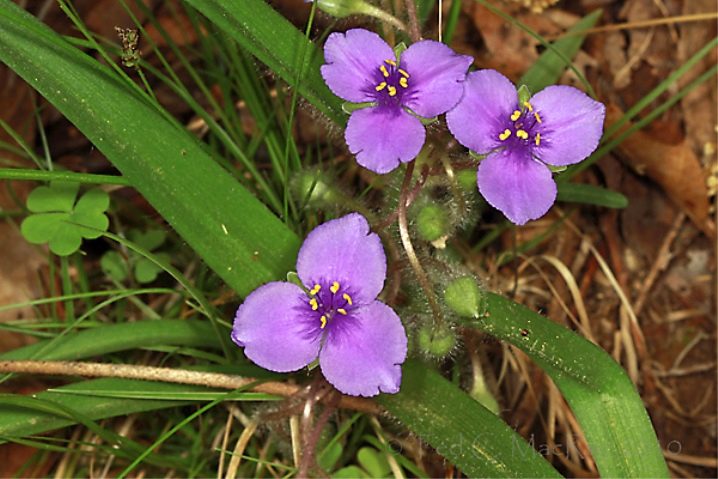
- Ohio... This species gives shrubs 1.2 meters high. The leaves are light coated.
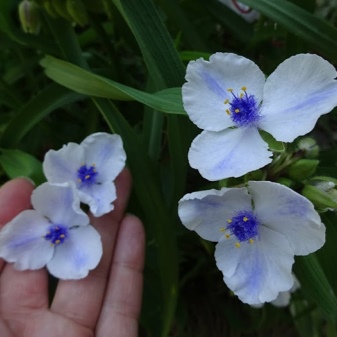
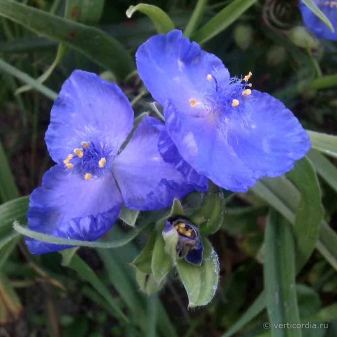
- Tradescantia bracts. The size of the plant does not exceed 60 cm, the stems are smooth, and the sepals are pubescent.

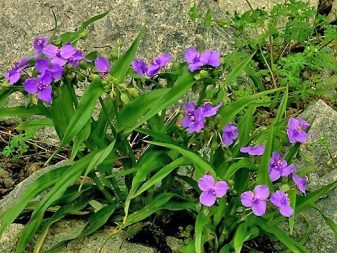
- Tradescantia subasper. The shoots of the plant have a zigzag shape and grow up to 1 m in length.
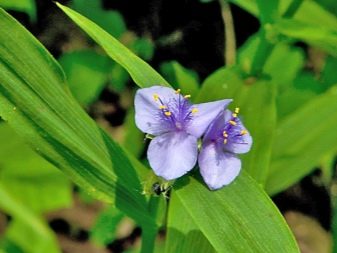
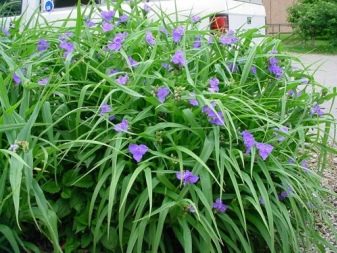
Transfer
Finding a place for tradescantia in your garden is not difficult. This perennial plant grows well in a wide variety of locations: next to a pond, on a flower bed, near a tree and next to a house. If you want to admire the flowers for as long as possible, then a place open to the sun's rays will not work. Direct rays can cause burns, which, in turn, will lead to the death of individual parts of the leaf. The flower will feel more comfortable in the shade.
With all the love for moisture, it tolerates a long absence of rain well, the main thing is to water it regularly.
Before planting, it is worth feeding the land with manure or mineral fertilizer. Progeny from Tradescantia are obtained in 3 ways:
- seeds;
- cuttings;
- dividing the bush.
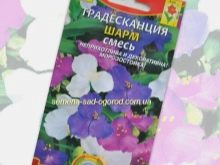
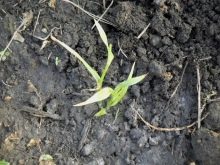
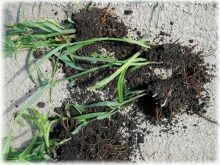
The division of the bush is usually carried out every 3-4 years. The procedure should be carried out in the spring. The bush is carefully dug out, keeping a root ball of earth. When dividing the rhizome, it is very important not to damage it. The resulting small bushes are planted in pre-prepared pits.
If you plant seeds in a greenhouse in March, then by the end of spring it is time to place the seedlings in a flower bed. They will bloom in 2-3 years. Cuttings are planted in the summer, after keeping them in water for several days until roots are formed. They take root well and grow quickly.
It is important to know that if you plant a flower in the ground in a completely unlit place, then it will bloom faded. Most of all he likes a motley shadow, which allows a small hit of rays. And also this resident of flower beds loves tying to support, both artificial and natural: to other plants. If you plant the plants close to each other, then the garter is not needed at all. It is required only for large plants that sag under the weight of the foliage.

In landscape design
When developing site designs, it is important to position the plants so that tall specimens do not overlap undersized ones. Tall varieties are best planted in the background: after a couple of years they acquire a beautiful rounded shape with cascading shoots, and their small flowers always attract butterflies, which additionally decorate the bush. When decorating a garden, flower growers like to plant Tradescantia in the neighborhood of geyher, variegated sedge, hosts, ferns and astilbe.
They not only look good together, but they also support Tradescantia. It will look good in a shady mixborder, in the lower step of an alpine slide. And also a place near the fence is suitable for her, where the plant will be sheltered from the scorching sun.
If you pinch a flower once a year or every six months, the bushes will look more compact and thicker. Landing on the bank of the pond will be a good solution: Tradescantia will grow magnificently and bloom. This will beautify the garden pond, since the other plants that usually live in it do not have such aesthetic characteristics. After the Tradescantia has faded, remove the cups. If this is not done in time, then the seeds will spill to the ground and give new growth, which will not benefit the shape of the bush.

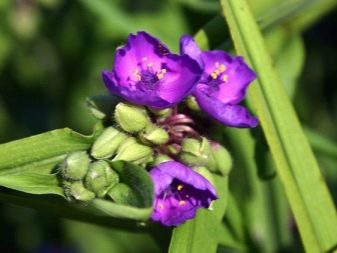
Care
To get lush blooms and strong foliage, it is important to remember to care for the Tradescantia. The principles of cultivation are quite simple, since the flower itself is unpretentious.
Watering
The plant loves abundant watering, with a lack of moisture, the flowers wither, its growth stops, and in extreme cases it can dry out completely.
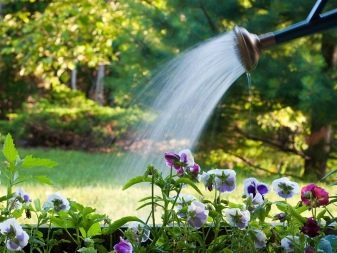
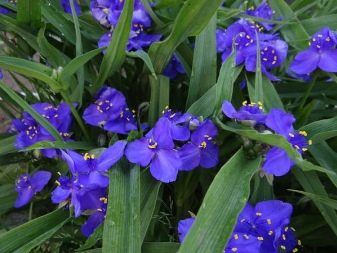
Top dressing
Often, Tradescantia fertilization is not required.They feed only the strong shoots that have appeared once and again when buds appear. Thanks to such measures, the plant will feel comfortable for a couple of years, after which it is possible to add mineral fertilizing again.
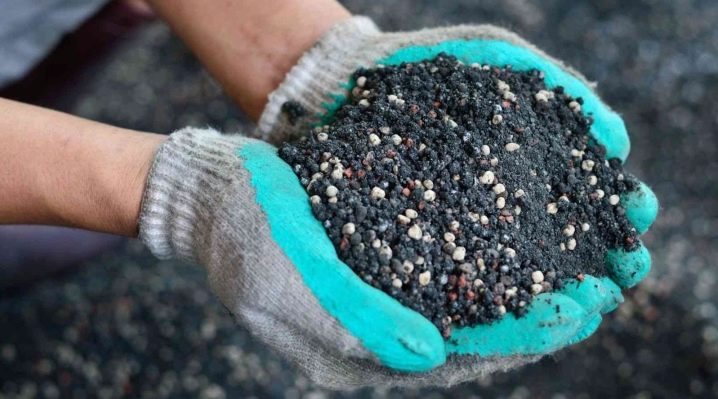
Diseases
This inhabitant of the flower bed is not afraid of insects and is little susceptible to disease, so he does not need to make special compositions for prevention. If, nevertheless, the leaves of this inhabitant of the garden covered spots, then most likely he suffered from fungal diseases. In this case, the tips of the foliage turn brown, a light bloom may appear, and the buds sometimes change shape to an irregular one. To get rid of this ailment, you will have to use fungicides.
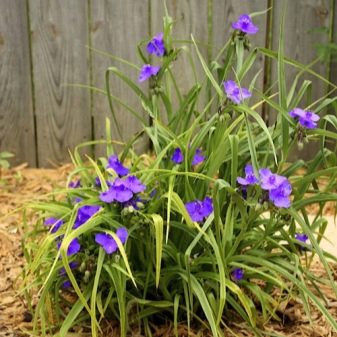

Wintering
To successfully survive the winter cold, it is advisable to cover the flower. For all its frost resistance, it needs protection. This is best done with fall foliage. It is placed in large quantities on top of the plants. Usually this is enough for a comfortable wintering of Tradescantia.
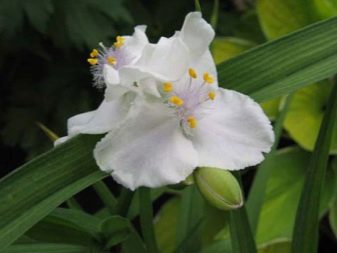
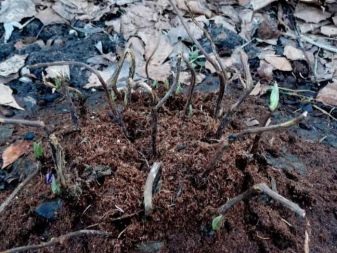
See below about the features of the garden tradescantia.


























The comment was sent successfully.